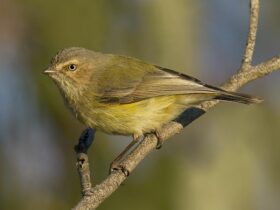Nestled within the lush wetlands and marshes of the Americas, the Purple Gallinule (Porphyrio martinicus) stands out like a vivid jewel amidst a tapestry of green. With its vibrant plumage, unique physical features, and intriguing behaviors, this enigmatic bird captivates the hearts of birdwatchers and nature enthusiasts alike. Join us on an exploration of the captivating world of the Purple Gallinule, as we uncover its remarkable characteristics and discover the beauty it brings to wetland ecosystems.
Purple Gallinule images
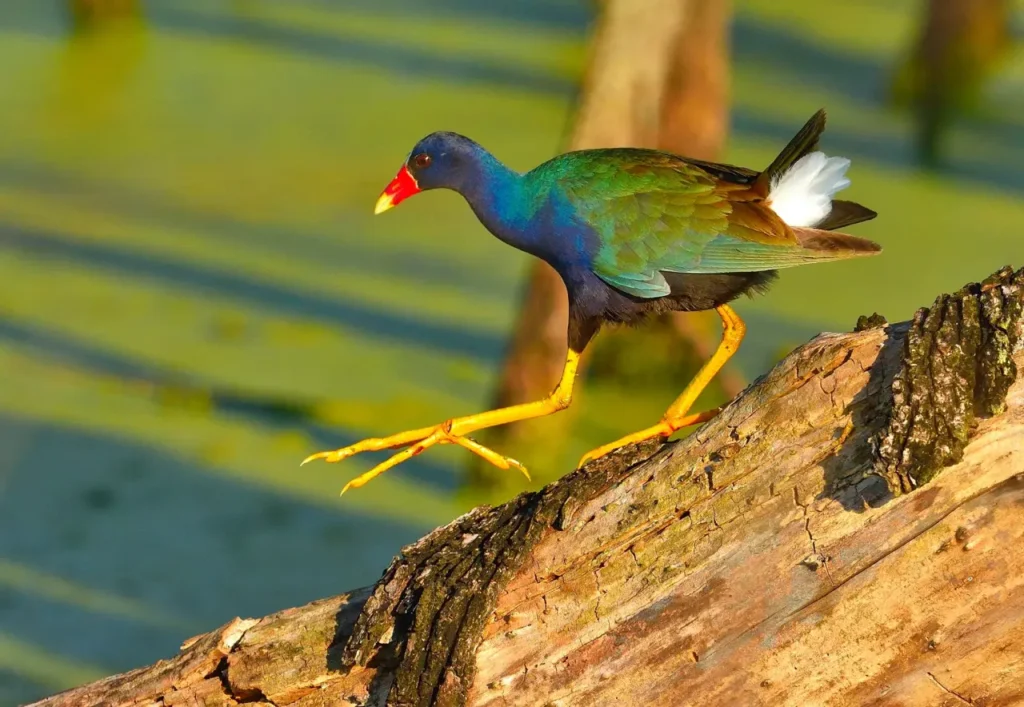
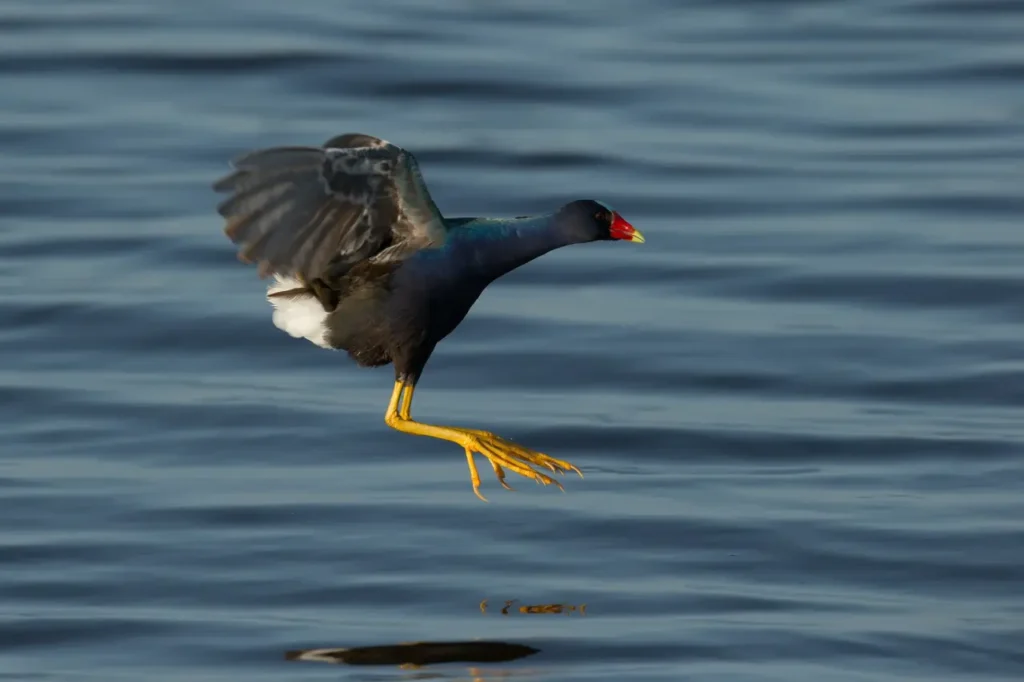
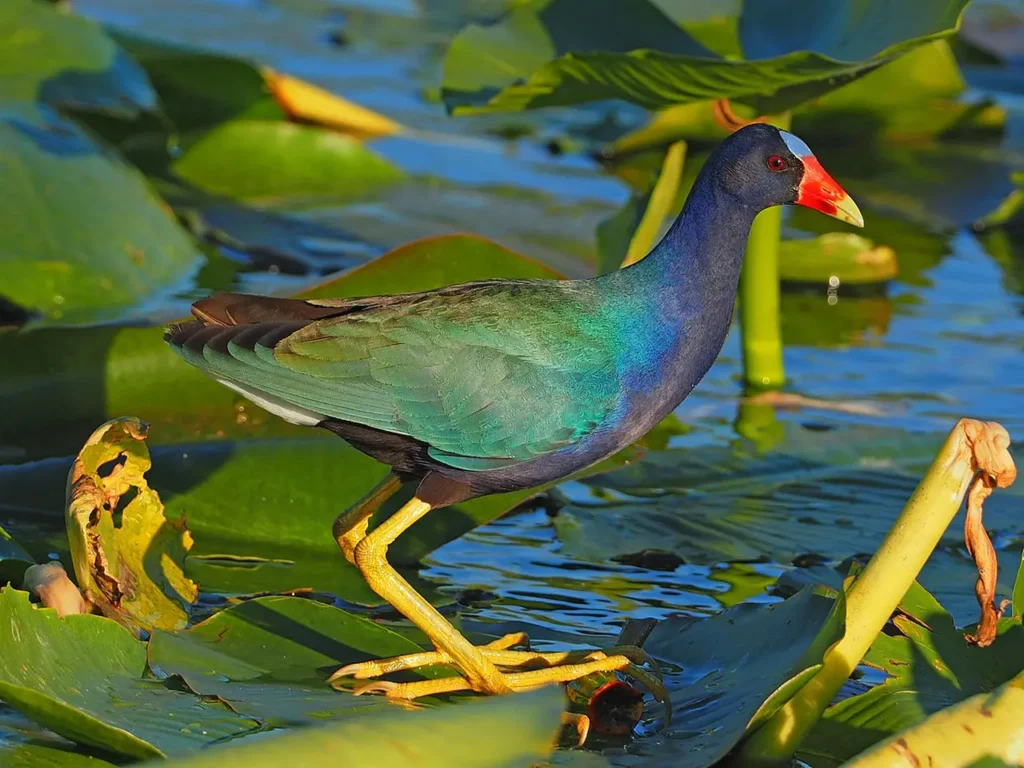
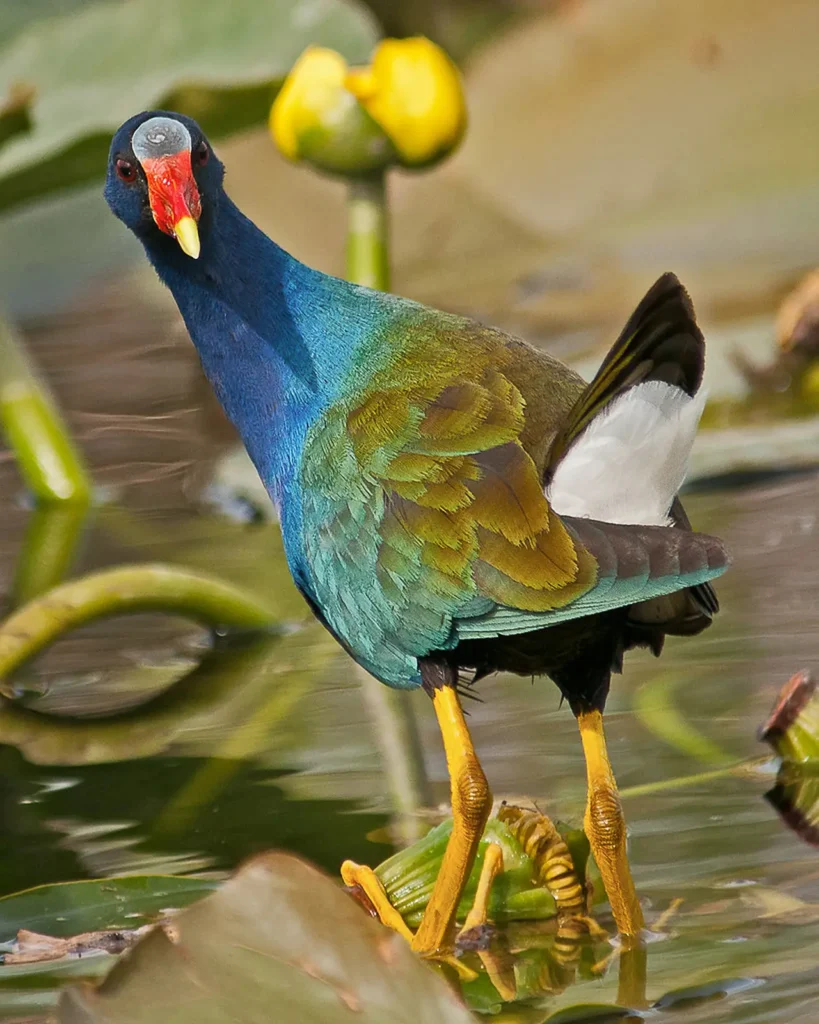
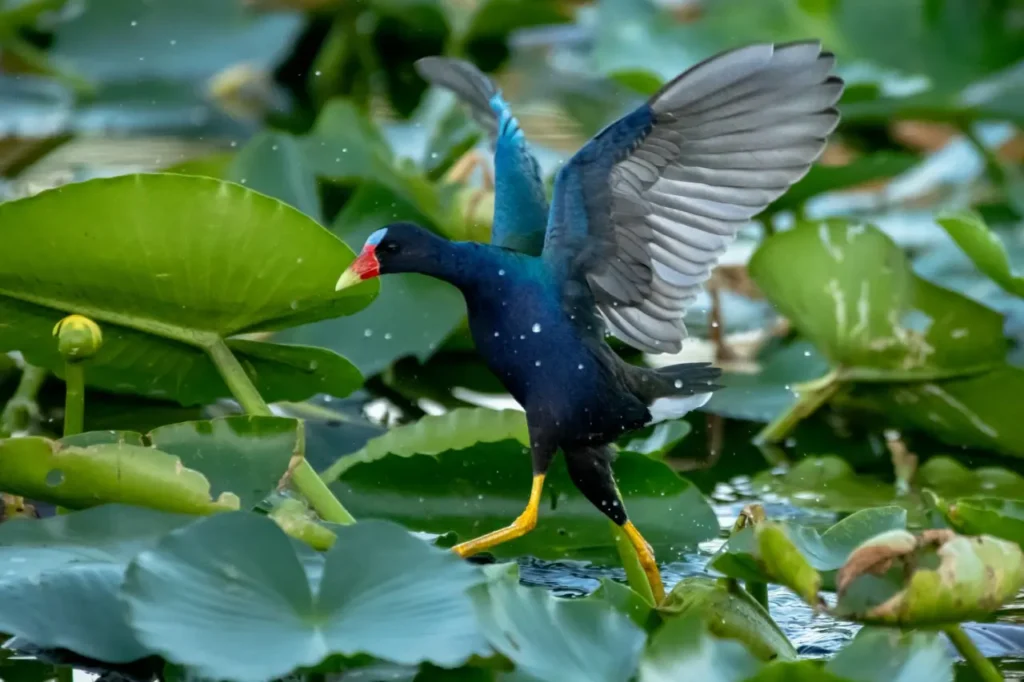
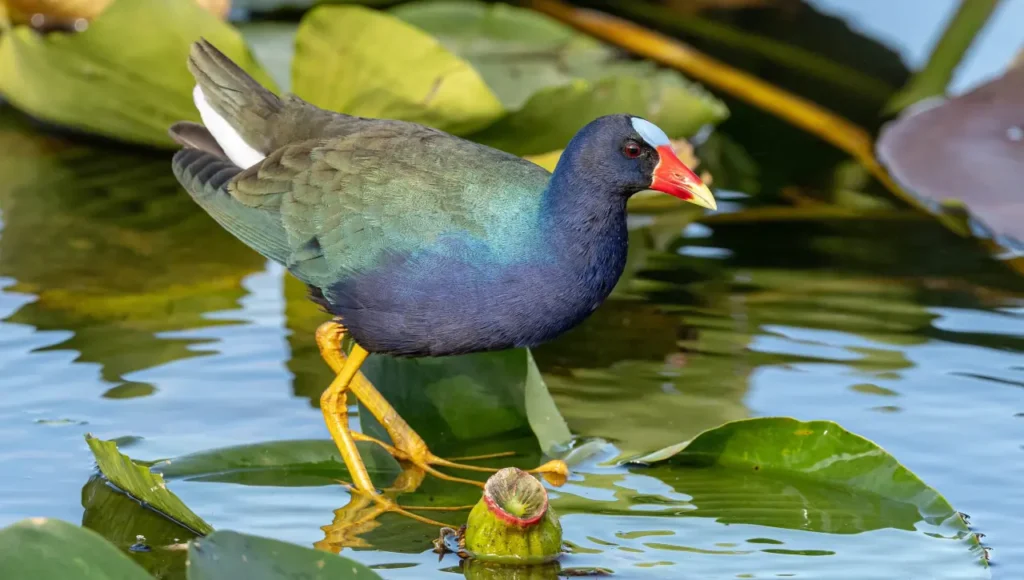
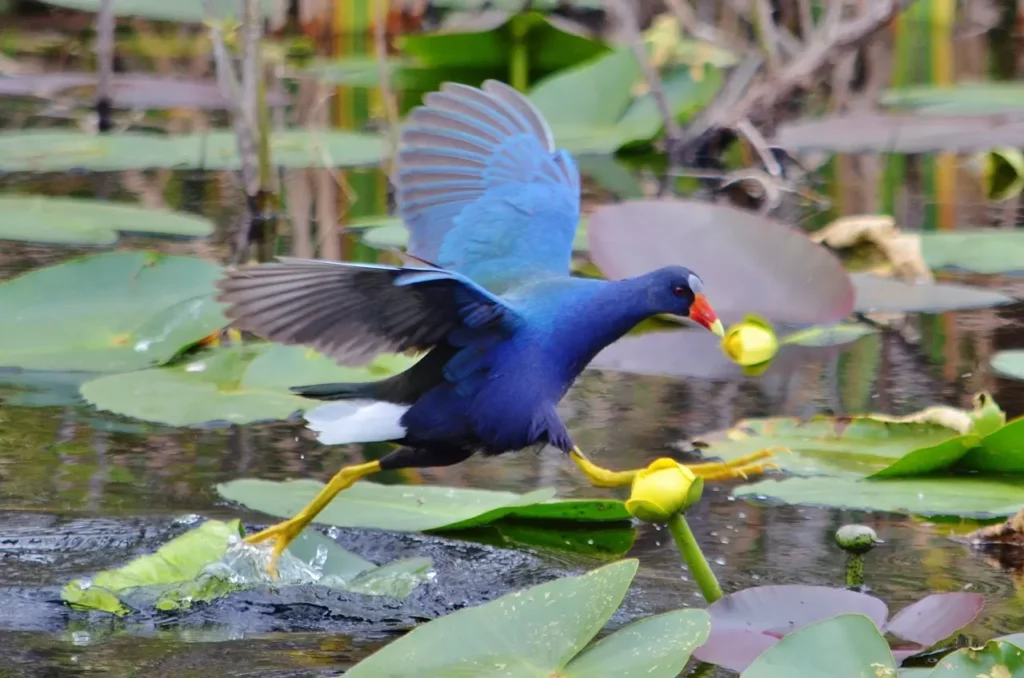
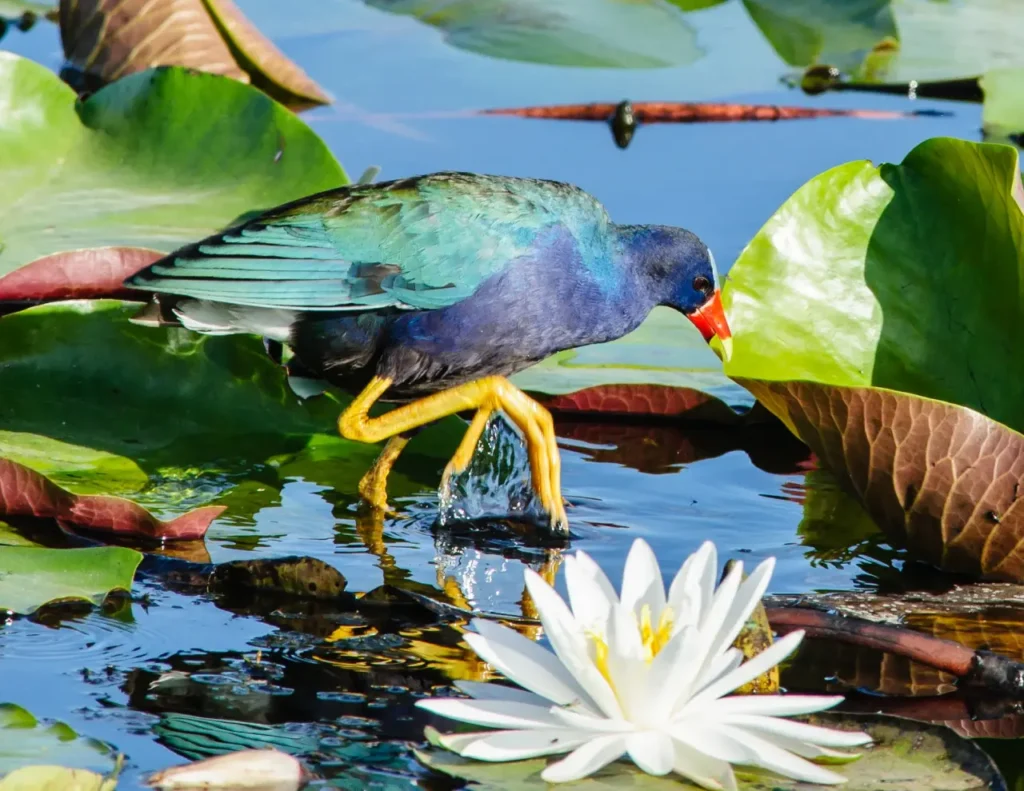
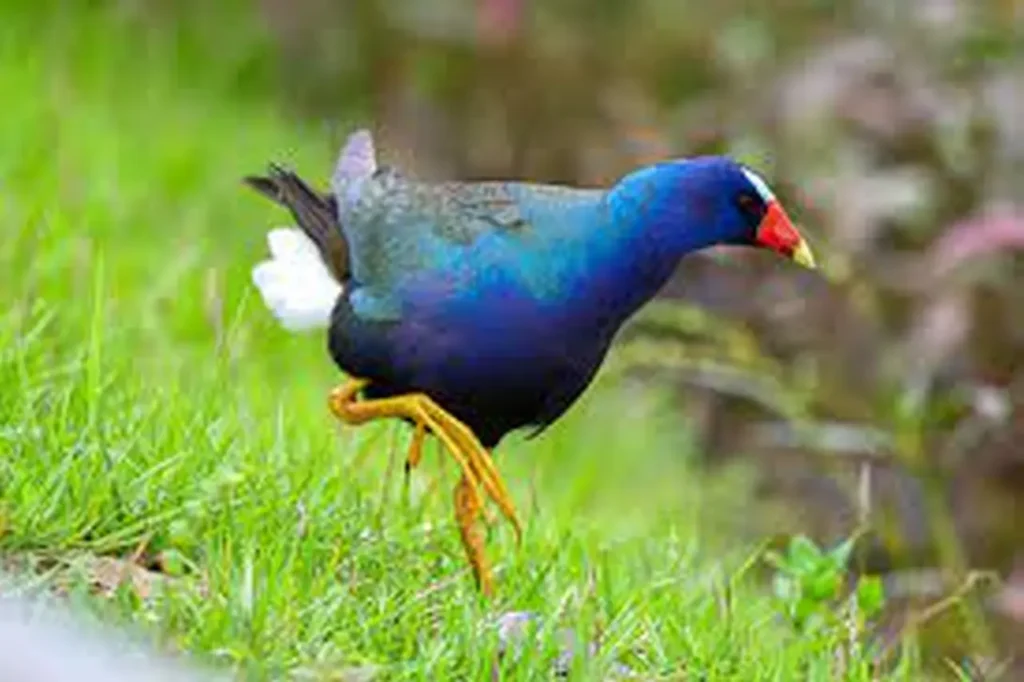
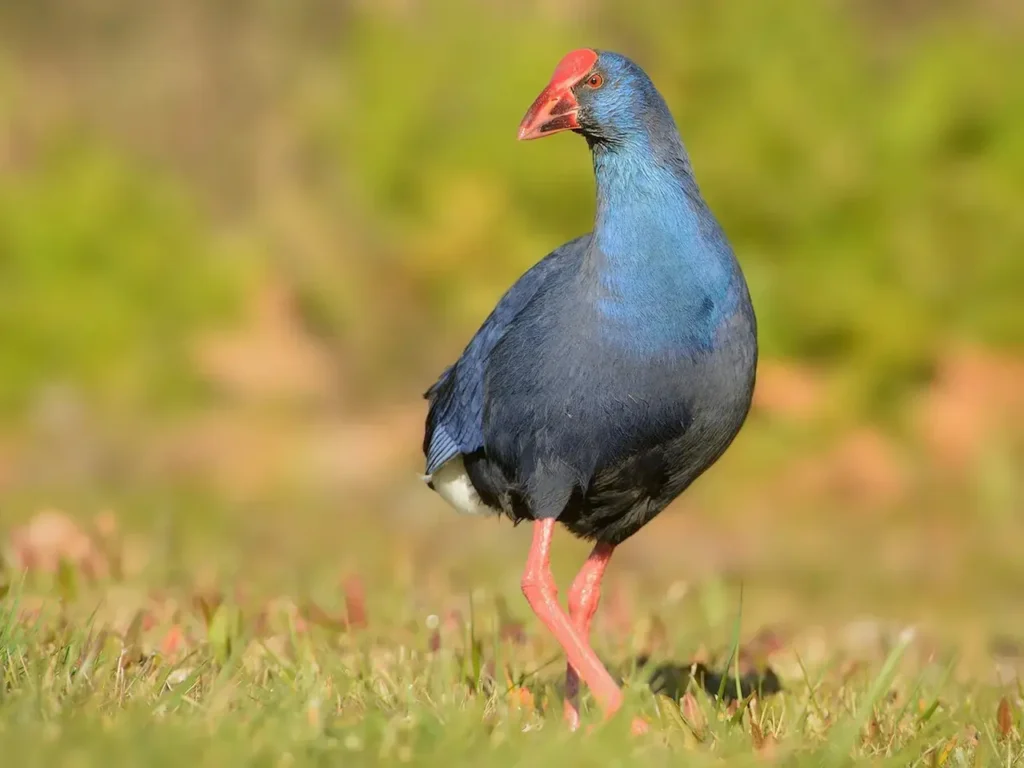
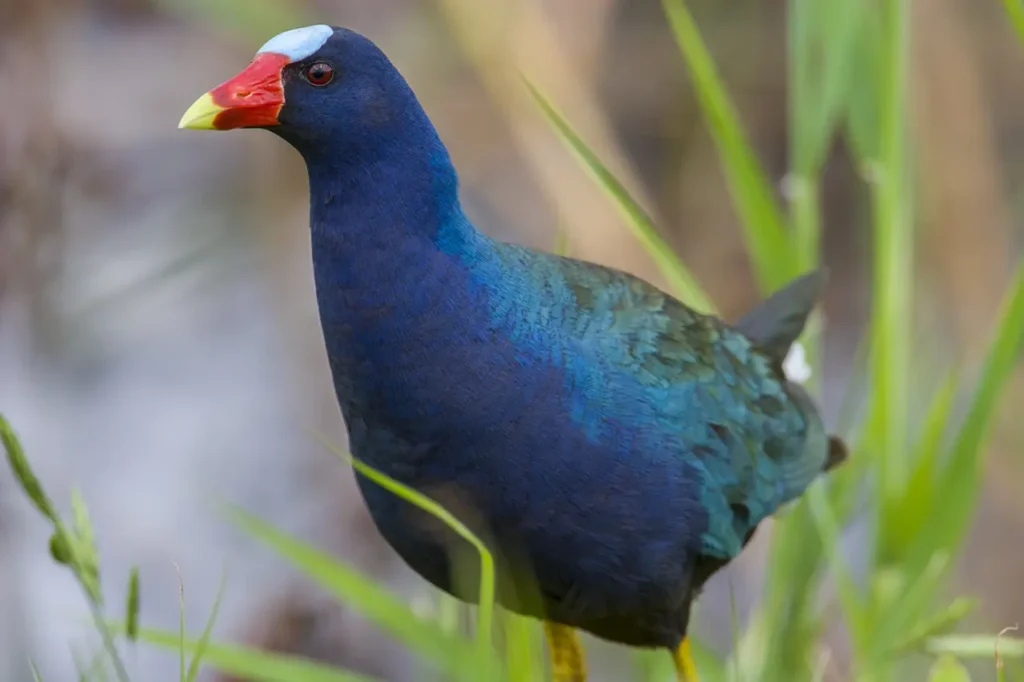
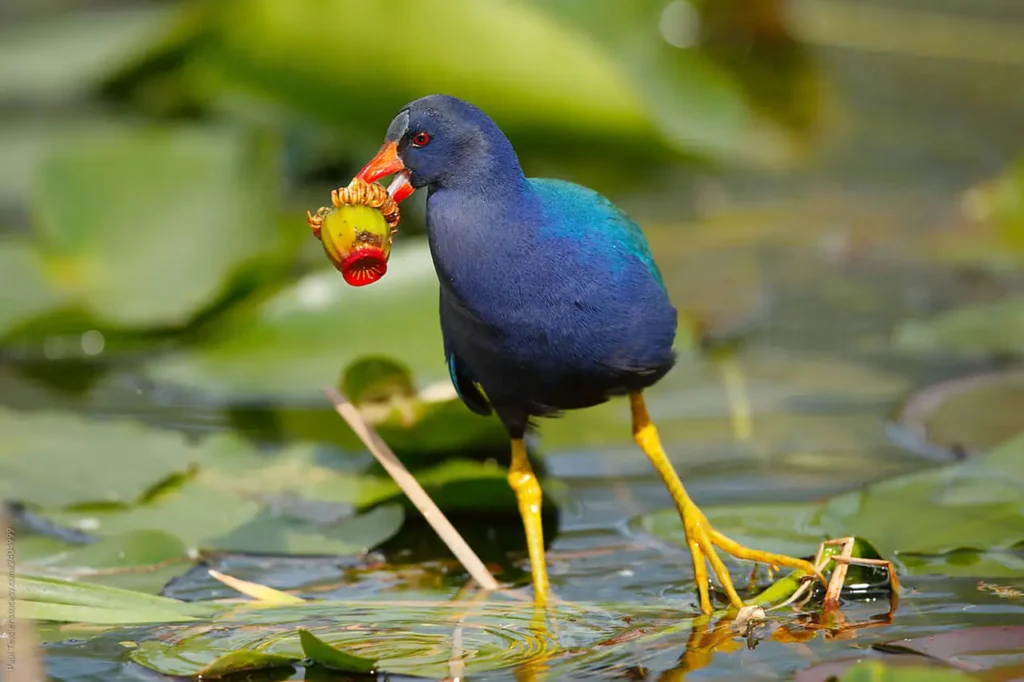
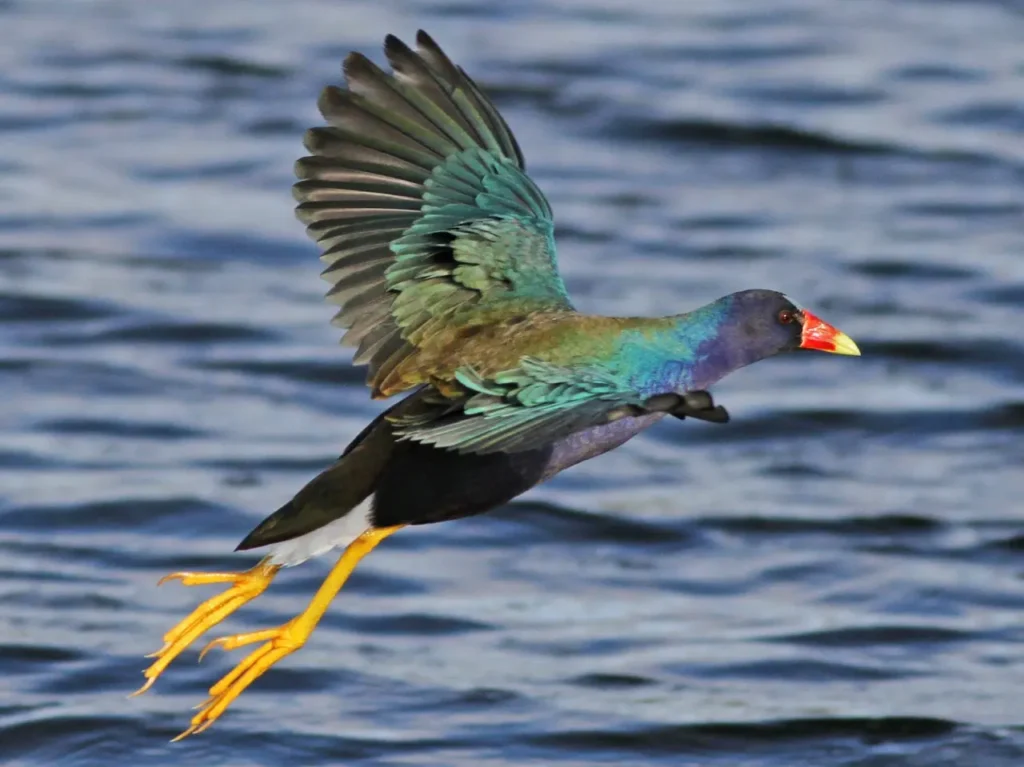
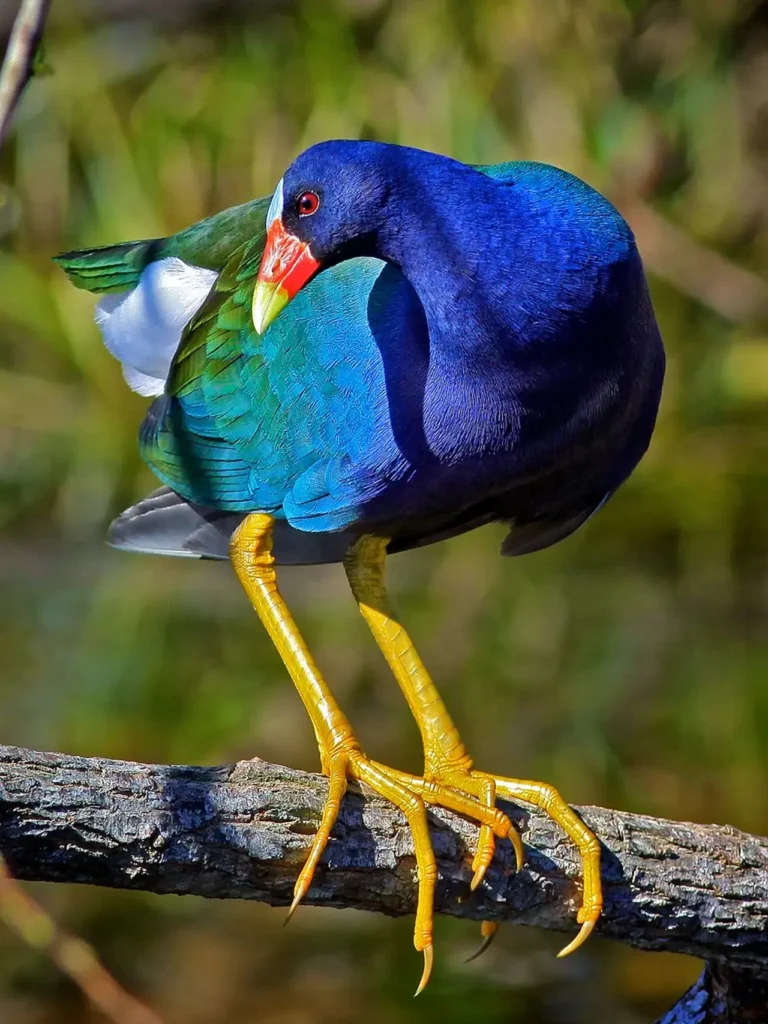
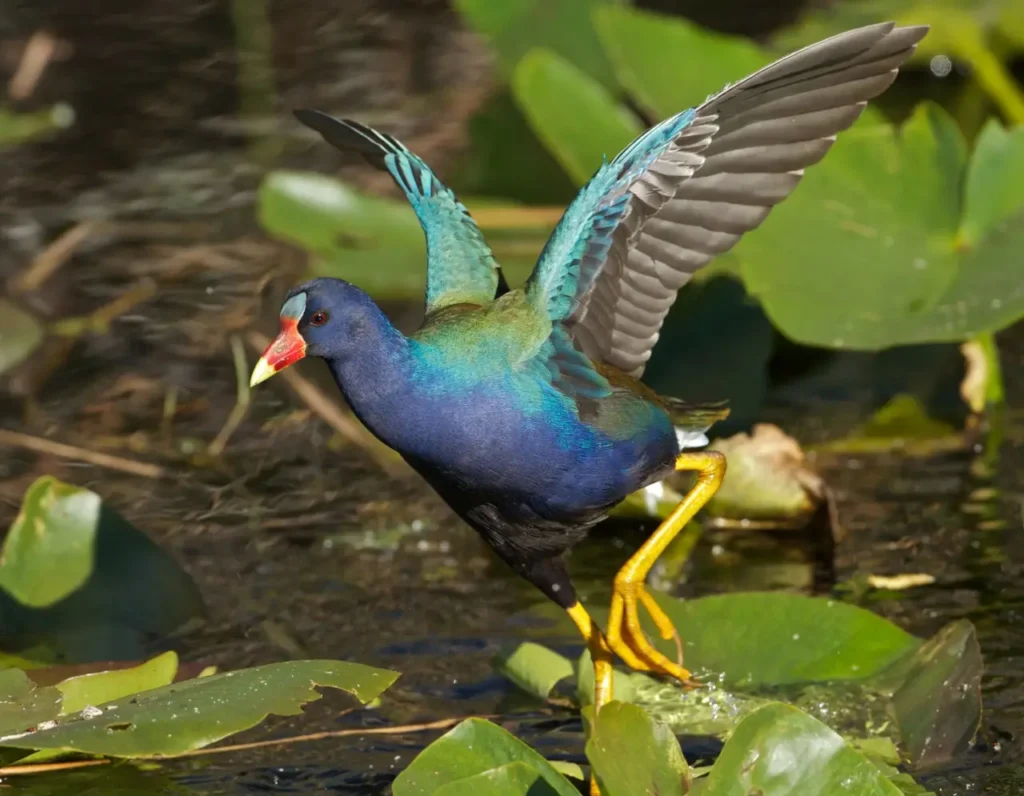
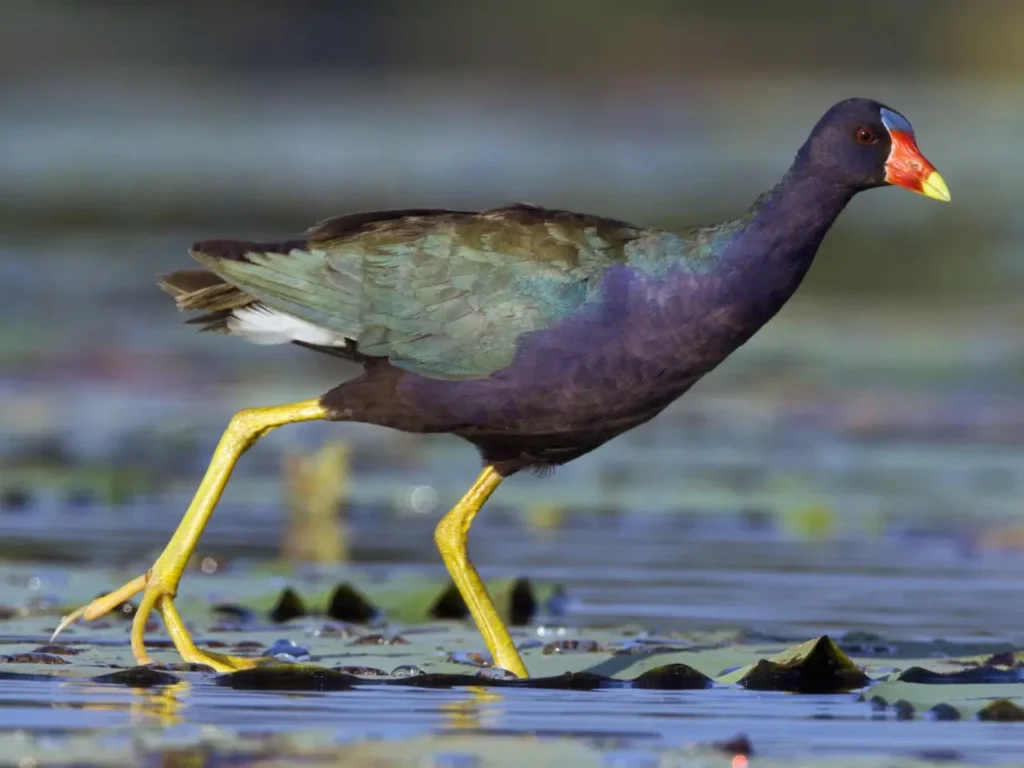
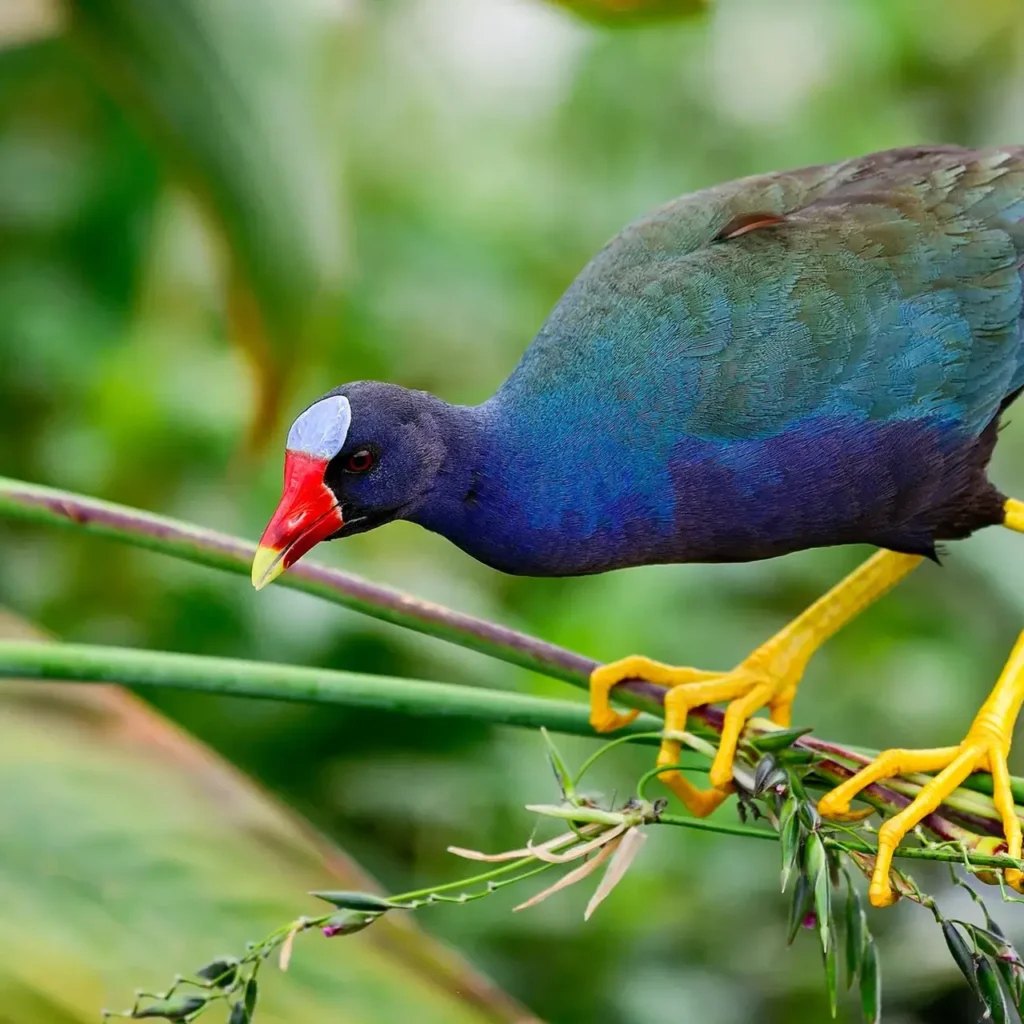
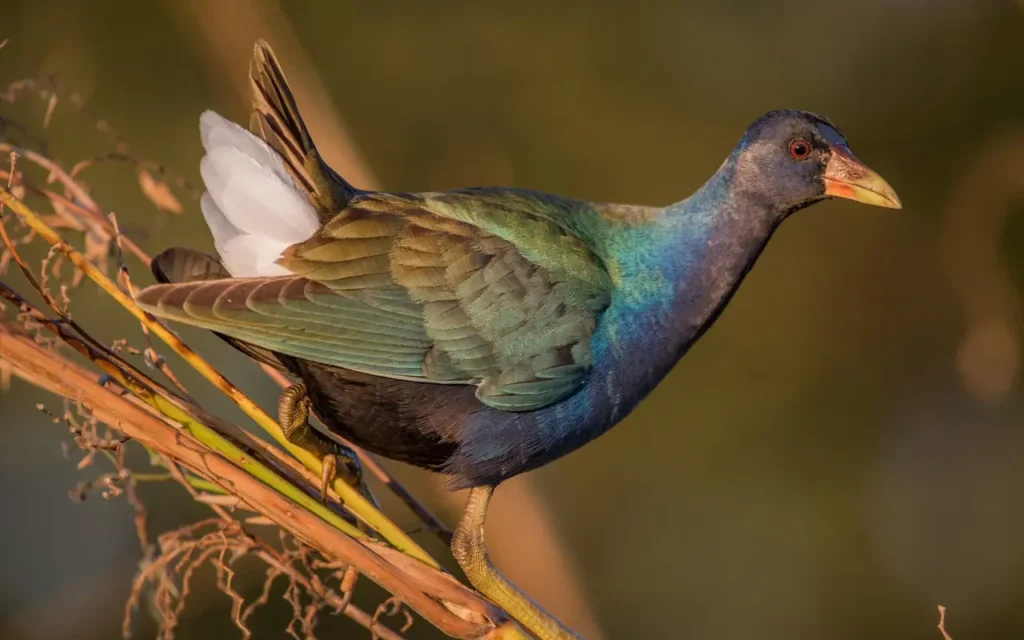
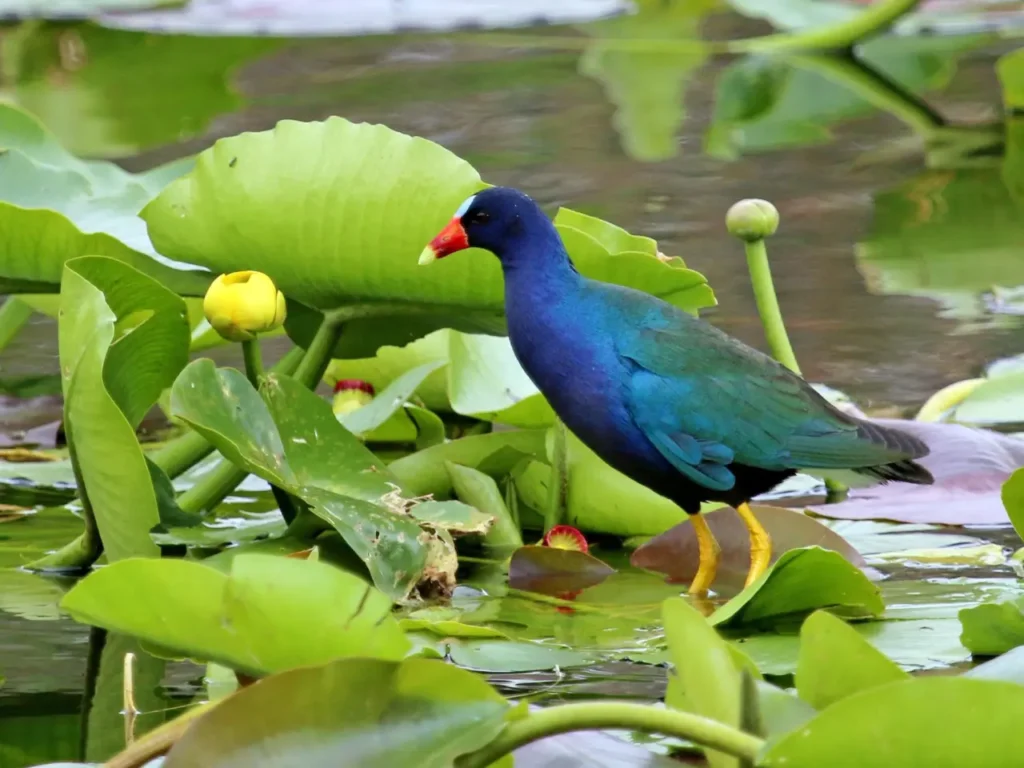
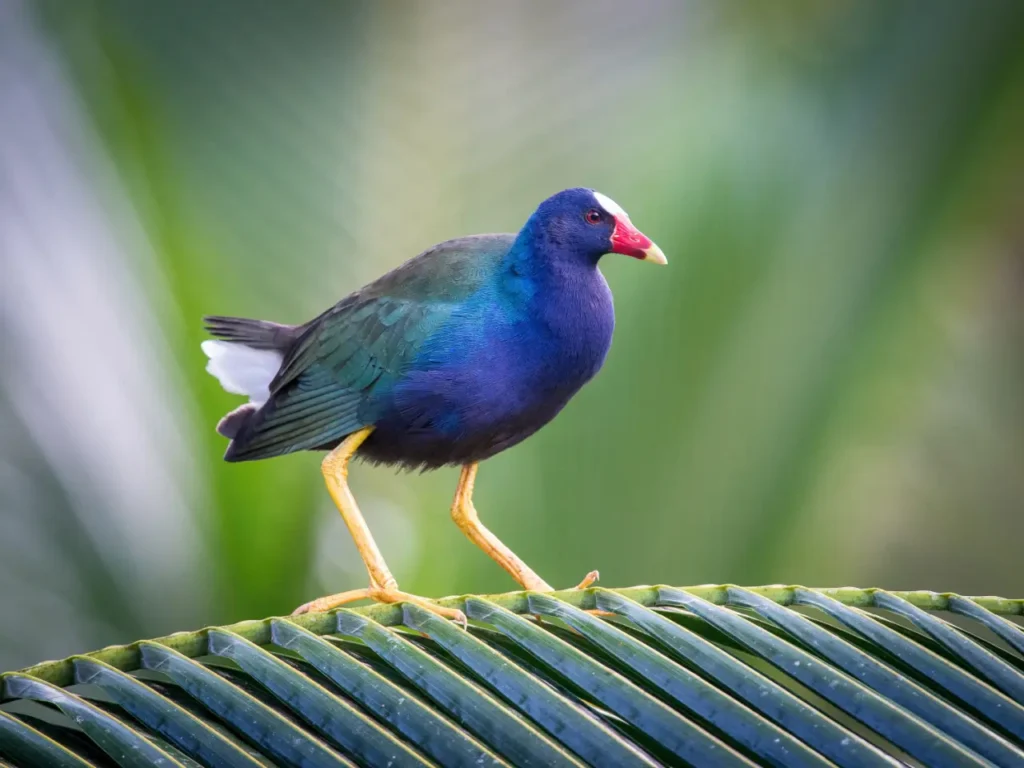
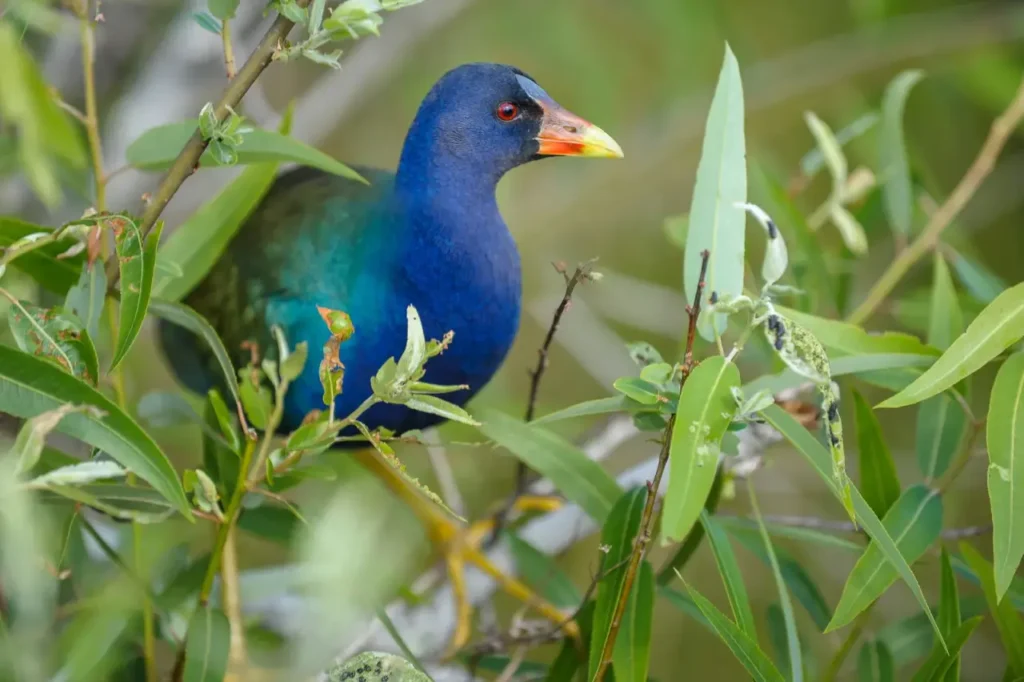
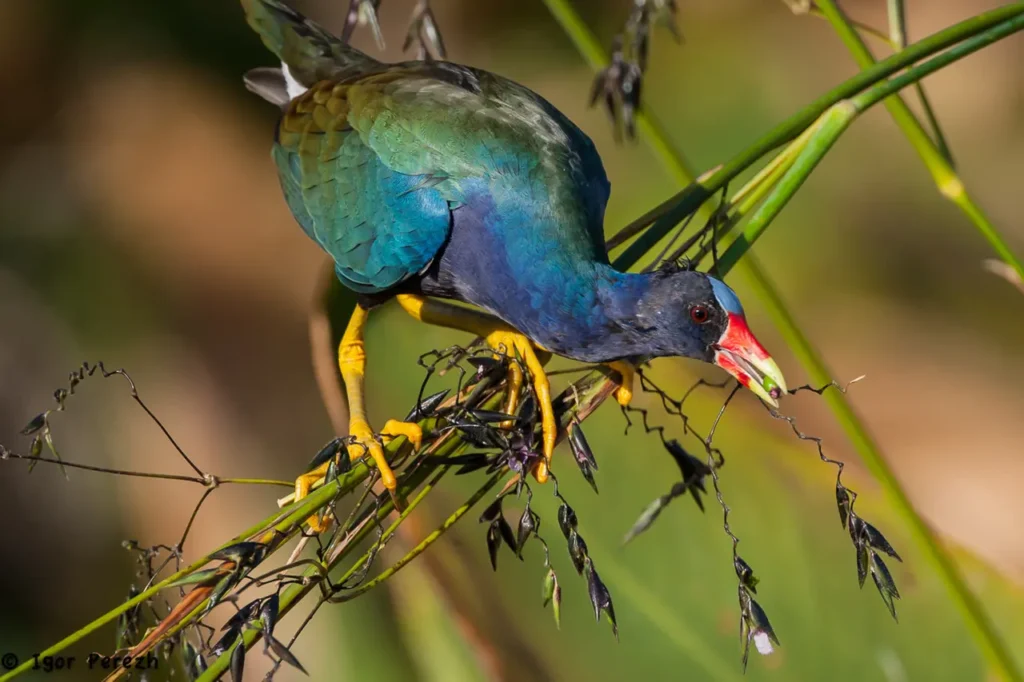
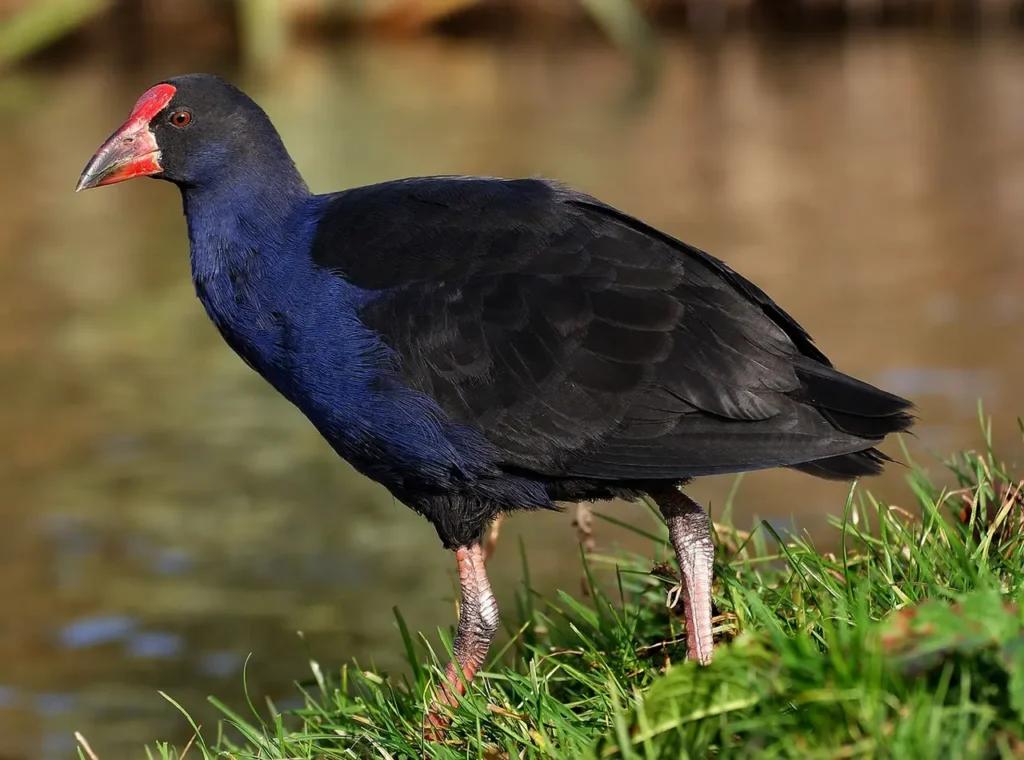
Facts about Purple Gallinule
The Purple Gallinule, also known as the “Swamphen,” belongs to the rail family and is widely distributed across the Americas, from the southern United States to northern Argentina. It thrives in a variety of wetland habitats, including marshes, swamps, and shallow lakes, where it can be found wading gracefully among the reeds and floating vegetation. Its preference for dense vegetation provides the bird with protection and ample opportunities for foraging on a diverse array of plant matter, insects, and small aquatic creatures.
What sets the Purple Gallinule apart is its striking plumage. As its name suggests, it boasts a rich plumage dominated by shades of purple, blue, and green, creating a dazzling display of colors that shimmers in the sunlight. Its bright yellow legs and oversized feet, equipped with long toes and claws, allow it to skillfully navigate through the tangled vegetation and walk on floating vegetation, earning it the nickname “Jesus bird” due to its seemingly miraculous ability to walk on water.
In addition to its vibrant appearance, the Purple Gallinule possesses other remarkable features. Its beak, a blend of bright red, yellow, and green, is perfectly adapted for its omnivorous diet, which includes a mix of plant materials, seeds, fruits, insects, snails, and small vertebrates. Its long, slender toes enable it to delicately grasp vegetation and move with agility across floating lily pads, while its strong wings enable short bursts of flight when necessary.
During the breeding season, the Purple Gallinule engages in an elaborate courtship display. Males and females participate in a synchronized dance, spreading their wings, bobbing their heads, and engaging in a series of vocalizations to attract a mate. Once a pair is formed, they construct a nest among the dense vegetation, skillfully weaving plant material to create a sturdy platform above the water. The female lays a clutch of eggs, and both parents take turns incubating them until they hatch.
As the young chicks emerge, they are covered in fluffy down feathers and are precocial, meaning they are capable of independent movement shortly after hatching. The parents diligently feed and protect their offspring, guiding them through the intricacies of their wetland environment until they are ready to fend for themselves. This nurturing behavior ensures the survival of future generations of Purple Gallinules.
While the Purple Gallinule is not considered globally threatened, certain localized populations face challenges due to habitat loss, pollution, and the encroachment of invasive species. Conservation efforts focus on preserving and restoring wetland habitats, implementing sustainable land-use practices, and raising awareness about the importance of wetlands as critical ecosystems for numerous bird species, including the Purple Gallinule.
Encountering the Purple Gallinule in its natural habitat is a true delight. Its vibrant colors, unique adaptations, and graceful movements make it a treasure to behold. By supporting wetland conservation initiatives, we can help ensure the preservation of these precious ecosystems and safeguard the future of this captivating bird.
The Purple Gallinule serves as a reminder of the immense beauty and diversity found in our wetlands. Its presence enriches the delicate balance of these habitats, and by appreciating and protecting it, we contribute to the conservation of our natural heritage. Let us continue to celebrate the Purple Gallinule and work together to secure a future where it can thrive, gracing our wetlands with its captivating presence for generations to come.
